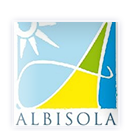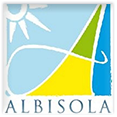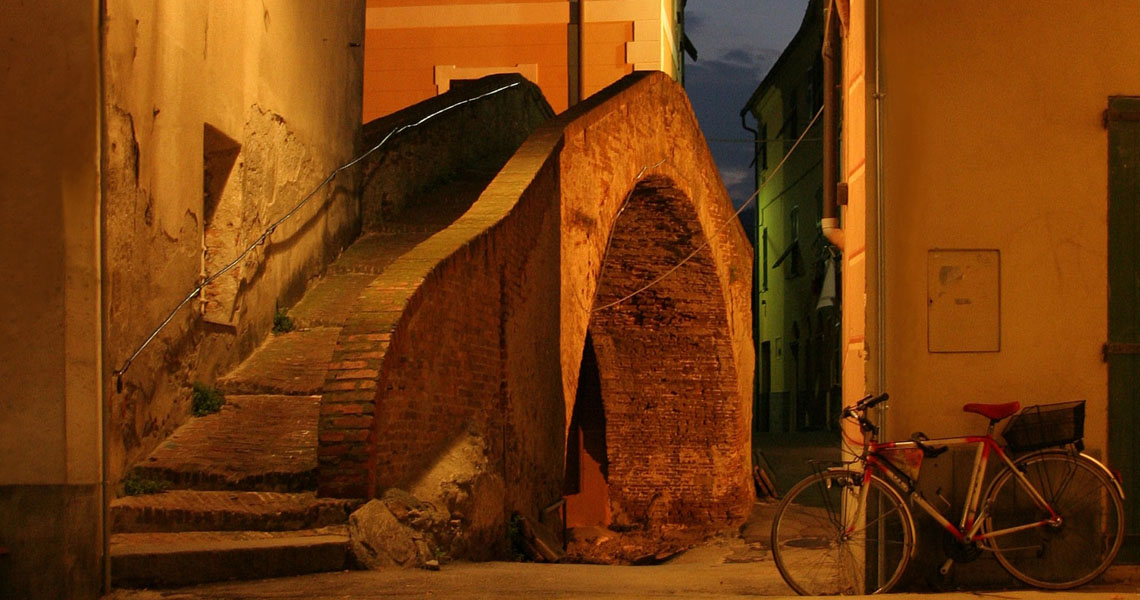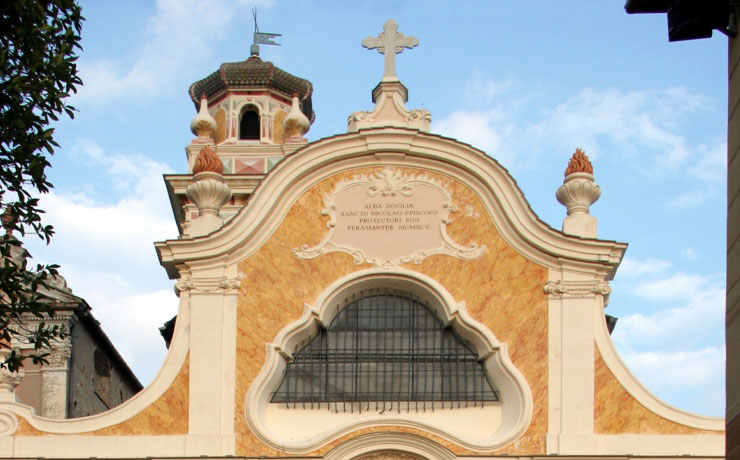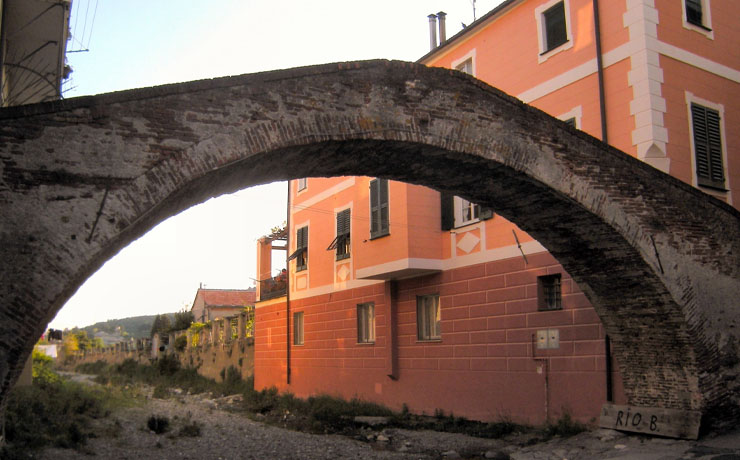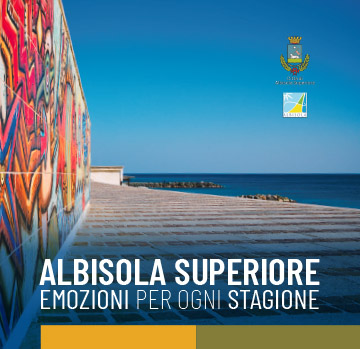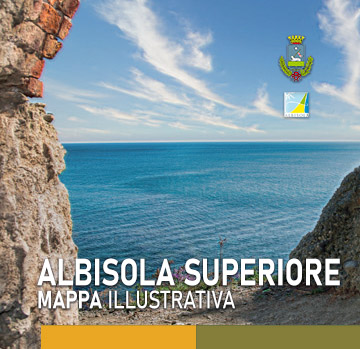The itinerary for visiting the historic center of Albisola Superiore ranges from medieval architecture to religious monuments, not forgetting the ceramic art, peculiar of the Albisola area, and a great example of the Genoese Baroque, such as Villa Gavotti.
The boundary wall of Villa Gavotti takes us straight to Via dei Della Rovere, the nucleus of the historic center, in which is the entrance to the villa, a magnificent specimen of the so-called Genoese Baroque, built in 1744 by Francesco Maria, doge of Genoa, the last descendant of the Della Rovere family. The villa was built on top of a building dating back to the 15th century: traces of the ancient building still remain: namely of the walls, the foot of the tower, and the floors, which were staggered from the current, taller and more imposing, ones. Gerolamo Brusco, architect of the Most Serene Republic of Genoa, designed and directed the transformation work.
The boundary wall of Villa Gavotti takes us straight to Via dei Della Rovere, the nucleus of the historic center, in which is the entrance to the villa, a magnificent specimen of the so-called Genoese Baroque, built in 1744 by Francesco Maria, doge of Genoa, the last descendant of the Della Rovere family. The villa was built on top of a building dating back to the 15th century: traces of the ancient building still remain: namely of the walls, the foot of the tower, and the floors, which were staggered from the current, taller and more imposing, ones. Gerolamo Brusco, architect of the Most Serene Republic of Genoa, designed and directed the transformation work.
His presence is the preeminent sign of a grandiose project aimed at transforming a vast portion of Albisola's territory into a unity where landscape, agriculture, art, and architecture were revisited and innovated in accordance with the taste of the age of Enlightenment. Around the villa, on a marshy territory subject to the flooding of the two streams Sansobbia and Riobasco, embankments were built, riverbeds narrowed, canals dug, rustic dwellings remade or readapted, and new paths were created from the edge of the fields leading to the seaside.
To this day Albisola’s historic center develops itself along via della Rovere, dominated by the medieval bridge, crossing the Riobasco with an elegantly shaped arc. In the year 1215 the podestà Gugliemo Trucco ordered the building of a masonry bridge on the Riobasco to allow the villagers to reach the San Nicolò church even in days when the river was in flood. That connection was realized by Guglielmo Fodrato, owner of the fields located between Luceto, the Sansobbia stream and the Riobasco itself.
Walking down via della Rovere you reach the parish church of San Nicolò, one of the oldest in the diocese, built at the feet of the Castellaro at the end of the 11th century, rebuilt in the 1600s and subjected to important transformations through the years. The typical parvis, dated 1837, is paved with black and white polished pebbles. The interior, split into three naves, hosts masterpieces by Ligurian masters such as Domenico Buscaglia, Francesco Gandolfi, Gerolamo Brusco, by the sculptor Francesco Schiaffino, while the chapel to the right of the chancel houses a valuable wooden crucifix from 1727 by Antonio Maria Maragliano, depicting "Jesus in agony." Adjacent to the church stands the Oratory of Santa Maria Maggiore, which preserves the wooden statue of St. Nicholas dating from 1708 by Anton Maria Maragliano.
Above the religious complex rises the Castellaro hill, important for its historical significance as the original nucleus of the ancient Roman city of Alba Docilia. Castellaro was a settlement perched on easily defensible sites, typical of pre-Roman Liguria. When the Romans founded Alba Docilia (4th century AD), they abandoned the Castellaro Hill because, confident in their power, they had no need to flee in the face of the enemy, but with the barbarian invasions everything changed again: the population abandoned the plains and the Hill was provided with a castle equipped with towers that dominated the valleys and the Via Aurelia. Despite the state of abandonment, the plan layout on which the artifact was set is still legible, and a gate and part of the masonry in elevation is fairly well preserved.
A short hiking route starts from the Church of San Nicolò and leads to Castellaro and arrives at the Shrine of Peace, built in 1578 at the site of a battle between the inhabitants of Albisola and Stella. Legend has it that as the combatants were about to start the fight, a white cloud appeared in the sky reflecting the sun's rays. The contenders dazzled by so much light laid down their arms and peace was made.
To this day Albisola’s historic center develops itself along via della Rovere, dominated by the medieval bridge, crossing the Riobasco with an elegantly shaped arc. In the year 1215 the podestà Gugliemo Trucco ordered the building of a masonry bridge on the Riobasco to allow the villagers to reach the San Nicolò church even in days when the river was in flood. That connection was realized by Guglielmo Fodrato, owner of the fields located between Luceto, the Sansobbia stream and the Riobasco itself.
Walking down via della Rovere you reach the parish church of San Nicolò, one of the oldest in the diocese, built at the feet of the Castellaro at the end of the 11th century, rebuilt in the 1600s and subjected to important transformations through the years. The typical parvis, dated 1837, is paved with black and white polished pebbles. The interior, split into three naves, hosts masterpieces by Ligurian masters such as Domenico Buscaglia, Francesco Gandolfi, Gerolamo Brusco, by the sculptor Francesco Schiaffino, while the chapel to the right of the chancel houses a valuable wooden crucifix from 1727 by Antonio Maria Maragliano, depicting "Jesus in agony." Adjacent to the church stands the Oratory of Santa Maria Maggiore, which preserves the wooden statue of St. Nicholas dating from 1708 by Anton Maria Maragliano.
Above the religious complex rises the Castellaro hill, important for its historical significance as the original nucleus of the ancient Roman city of Alba Docilia. Castellaro was a settlement perched on easily defensible sites, typical of pre-Roman Liguria. When the Romans founded Alba Docilia (4th century AD), they abandoned the Castellaro Hill because, confident in their power, they had no need to flee in the face of the enemy, but with the barbarian invasions everything changed again: the population abandoned the plains and the Hill was provided with a castle equipped with towers that dominated the valleys and the Via Aurelia. Despite the state of abandonment, the plan layout on which the artifact was set is still legible, and a gate and part of the masonry in elevation is fairly well preserved.
A short hiking route starts from the Church of San Nicolò and leads to Castellaro and arrives at the Shrine of Peace, built in 1578 at the site of a battle between the inhabitants of Albisola and Stella. Legend has it that as the combatants were about to start the fight, a white cloud appeared in the sky reflecting the sun's rays. The contenders dazzled by so much light laid down their arms and peace was made.
